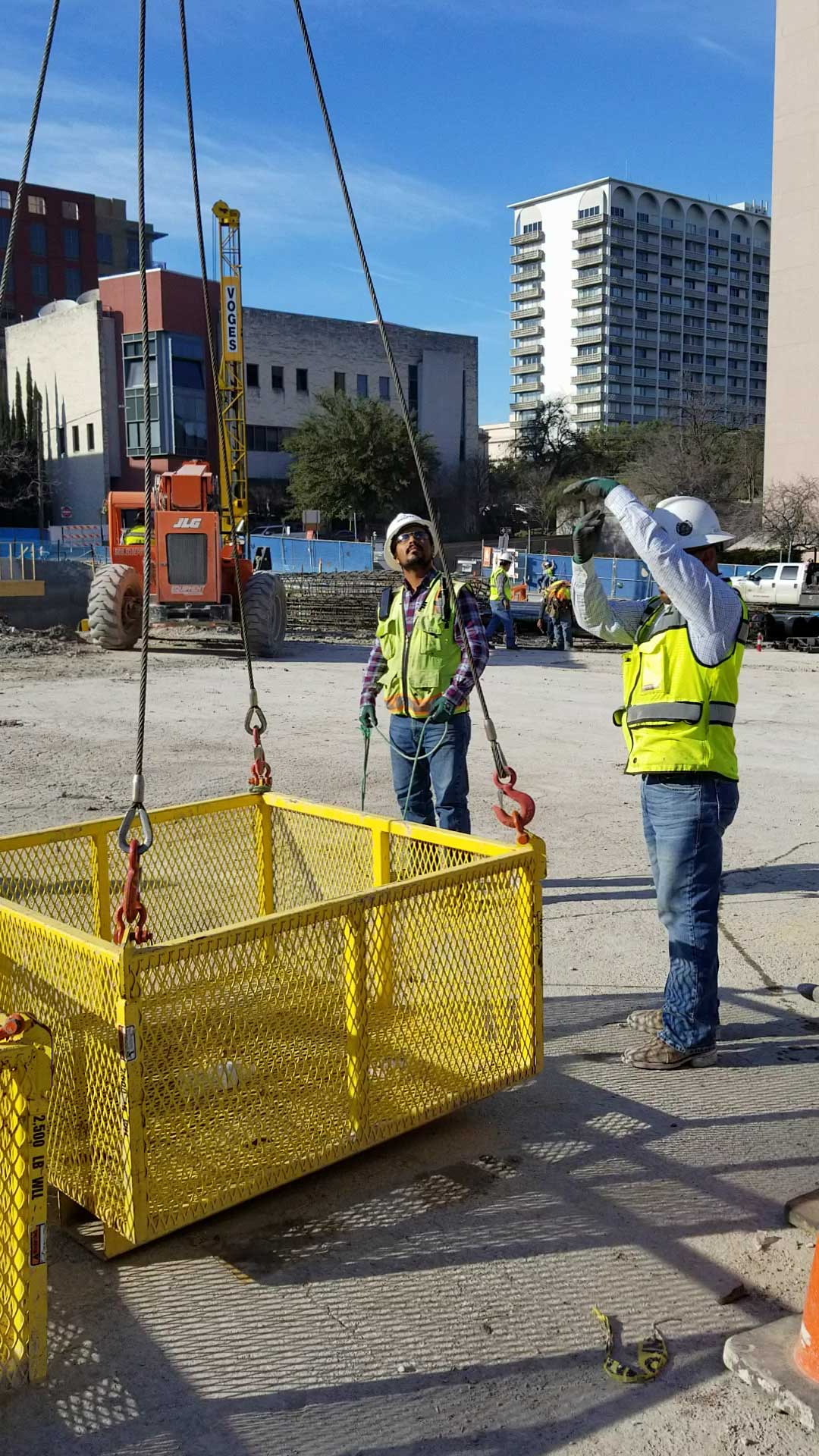Rigging Training and Signal Person Safety Training
At National Safety Partners, we provide rigging inspection and signal training to equip professionals with the necessary skills needed to work safely on the job. Our courses cover proper rigging techniques, hitch types, sling angle calculations, and fall zone awareness. Participants will also learn how to inspect rigging equipment, identify potential hazards, and apply OSHA rigging training standards in real-world scenarios.
Once the training is completed, all students must pass both a written and a practical exam, ensuring they demonstrate the knowledge and hands-on ability to handle rigging operations safely and effectively.
Compliance with Industry Standards
Our training programs adhere to key safety regulations, including:
- OSHA 29 CFR 1910.184 and 1926.1404
- OSHA 29 CFR 1926.1419(B)(8)
- ASME B30.5 standards
By following these guidelines, we make sure our qualified rigger and signal person training meets the highest safety and operational requirements in the industry.
Importance of Rigging Training and Certification
Proper certification ensures that riggers and signal persons are competent to handle loads, reducing the risk of workplace accidents. Certified signal person training and rigging certification training help professionals meet employer expectations, regulatory standards, and industry best practices.
Course Levels
There are two primary levels of rigger certification:
- Rigger Level 1 (Basic): Covers fundamental rigging practices, including safe operations, basic hitches, and equipment inspection. Ideal for individuals beginning their careers in rigging.
- Rigger Level 2 (Advanced): Offers in-depth training for complex rigging tasks, including lift planning, load dynamics, and advanced equipment use. Suitable for those managing more challenging rigging operations.
Rigging Training Content
Our courses cover a broad range of essential topics:
- Safe rigging practices and lifting operations
- Load calculations, sling angles, and center of gravity
- Inspection of rigging hardware and below-the-hook devices
- Proper use of slings, chains, and other rigging equipment
- Common hitches, knots, and rigging configurations
- OSHA and ASME compliance standards
- Signal person responsibilities and communication techniques
This combination of theory and practical application helps students prepare for the demands of their role.
Certification Process
To become a certified rigger, candidates typically need to:
- Complete a training course (available both online and in-person)
- Pass a written exam
- Pass a practical exam demonstrating rigging skills
- Obtain certification that is valid for 2-5 years, depending on the program
Certification not only validates the rigger’s expertise but also enhances their career opportunities by meeting the rigorous standards required in the industry.
Online vs. In-Person Rigging Training
Advantages of Online Training
Online rigging training offers several benefits, including:
- Flexible, self-paced learning
- Cost-effective compared to on-site courses
- Consistent content across all participants
- Limitations
- No hands-on practice
- Practical exams still required for full certification
Recommended Approach
For comprehensive certification, we recommend combining online learning with in-person practical evaluations to develop both knowledge and hands-on skills.
Why Choose National Safety Partners
Our programs are designed to provide comprehensive rigging training and signal person certification that meet industry standards and regulatory requirements. With experienced instructors, practical assessments, and flexible learning options, we help professionals become competent, confident, and compliant in their rigging roles.
Contact Us
For more information about rigging certification training, OSHA rigging training, or to schedule a training session, contact National Safety Partners today. We are committed to providing training that ensures workplace safety and professional success.

